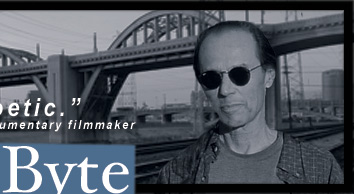
 |
Duck and Cover
To better understand America’s culture war, a full consideration of Bert the Turtle is essential. “There was a turtle by the name of Bert. And Bert the turtle was very alert. When danger threatened him, he never got hurt. He knew just what to do.” Bert would duck and cover. The danger he faced was a nuclear explosion. Since, you’re not a turtle with a protective shell, Bert recommended that you protect yourself from personal nuclear annihilation by assuming the fetal position — back to the source, down on your knees, forehead to the floor, hugging the back of your neck — or to put it crudely, say your prayers and kiss your ass goodbye. Bert, by the way, starred in the 1951 United States Civil Defense film, Duck and Cover — a black and white animated American pop culture respond to the Soviet Union’s first atomic bomb test in August of 1949. When Duck and Cover was released to schools across America, it was believed that the most common injuries from a Hiroshima-style nuclear explosion would be from blast damage and heat. Radioactive fallout was not recognized as a major life threat until 1954, after a Marshall Islands US nuclear test brought sickness and death to a boatload of Japanese fishermen casting their rods far outside the A-bomb test area. Dead irradiated Japanese fisherman, however, couldn’t sidetrack the Bert duck and cover PR push by the US government. After all, the turtle, in an anthropomorphic-way, empowered young Americans to take charge of their lives at that all-important moment of imminent death. Bert’s visibility also made the anxiety caused by a potential for nuclear war, and, more importantly a mind-numbing existential fear, part of the American public character. “We all know that the atomic bomb is very dangerous,” the friendly voiced narrator of Duck and Cover told us. “It is such a big explosion it can smash in buildings, knock sign boards over and break windows all over town. But if you duck and cover, like Bert, you will be much safer.” In the real world, the big explosions of 1945 turned Hiroshima and Nagasaki into villages of the damned with mountains of toasted and bloated dead bodies piled high. The lines of survivors, their skin charred and hanging, streamed away from this hellhole firestorm. Many of them, who may have ducked and covered, died within days after suffering acute non-stop symptoms of fever, diarrhea and vomiting. Bert didn’t talk about that. He had a particular point of view and a cartoonish way of avoiding the obvious. It was his studied hard turtlian shell obliviousness that divided America into two kinds of people, those who believed him and those who didn’t. Bert’s believers were magical thinkers. Bert’s doubters or more to the point, those who recognized that Bert was a tool — were called cynics. The culture war now had a clear intellectual boundary. Today, Bert’s magical believers have grown up. But that doesn’t stop them from having points of view no matter how useless they are. Bert’s duck and cover position is now the answer to a host of significant human concerns: Toxic pollution; Global warming; The Economic crises. Not to worry. The magical believers have a response. They have a turtle by the name of Bert. Who somehow makes them very alert. When danger threatens them, they never get hurt. They know just what to do. Duck and Cover. — Nathan
Callahan © NathanCallahan.com / Nathan Callahan / all rights reserved |
Broadcasting Fridays at 8:50 am from KUCI 88.9 fm Orange County, California
|